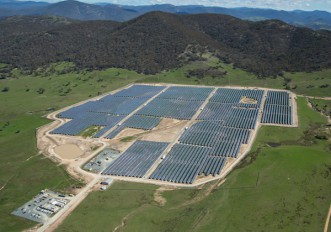North America’s largest coal plant is being replaced by a solar farm

The plan was part of a larger Canadian initiative to reduce its carbon emissions
The plan was part of a larger Canadian initiative to reduce its carbon emissions
The Nanticoke Generating Station in Ontario, Canada, was once North America’s largest coal plant, able to produce almost 4GW of power at full capacity (for comparison, the Hoover Dam is a 2 GW facility). In 2013 though, it stopped producing energy as part of the province’s coal phase-out and was officially shuttered for safety reasons two years later. Now, given the focus to renewable energy and the province’s Independent Electricity System Operator’s (IESO) Large Renewable Procurement (LRP) program, the site will be repurposed to house a 44 MW solar farm expected to open in 2019. The redevelopment has been characterized as a ‘symbolic move’, as it will produce much less energy in comparison to the coal plant, but at least it will be ‘green’ energy.
The joint venture will be led by Sun Edison Canadian Construction, alongside Six Nations Development Corporation, and Ontario Power Generation (OPG). “The project is a great example of how countries are retiring coal plants and replacing them with clean, renewable power plants,” said Michelle Chislett, SunEdison vice-president and country manager for Canada. Jeff Lyash, OPG’s president and CEO, said: “I am thrilled with this opportunity. OPG is already Ontario’s largest renewable energy producer and this will be an important addition to our portfolio. We stopped burning coal at Nanticoke in December 2013 and this is an investment in a cleaner energy future for Ontario.” The Nanticoke development is one of seven solar projects totaling 140 MW that IESO backed in Phase 1 of the LRP. (the LRP is a competitive process for procuring large renewable energy projects that are larger than 500 kilowatts). Apart from solar, targets for the first procurement included up to 300 MW of wind, 50 MW of bioenergy and 75 MW of waterpower.
Clean air comes at a price
The province’s turn to renewables has already provided significant health benefits to the residents, while the smog days have been reduced from 109 between 2005 and 2007, to zero in 2015. However, these results have come with notable economic ramifications, according to the Ontario Energy Board. On-peak power cost consumers 17.5 cents/kWh in Nov. 2015, compared to just 9.7 cents/kWh in the same month of 2006, while off-peak power cost 8.3 cents/kWh in 2015, relative to 3.4 cents/kWh in 2006.
Apart from the increased energy bills, the lost jobs is another side-effect of the coal phase-out initiative. The Nanticoke used to employ some 630 people when it was in operation, and although there are no estimates available for employment at the new solar farm, it is expected to require far fewer people.
Sources: Canadian Manufacturing, Mining& Energy, Huffington Post
Sources: Canadian Manufacturing, Mining& Energy, Huffington Post
Want to read more like this story?

2016 was a milestone for large-scale solar energy projects in Australia
May, 15, 2017 | NewsWind power has also gained ground in the country as its cost has fallen Wind power has also gaine...

Finland is banning coal for energy production by 2030
Jan, 11, 2017 | NewsIt is set to become the first country to bring such a law It is set to become the first country t...

Thailand’s first large-scale solar power plant has been operating successfully for 4 years now
Jul, 08, 2016 | NewsIt demonstrates the feasibility of large, private sector solar farms, and leads the way to a greener...

The biggest solar power deal in US corporate history has just been signed
Apr, 13, 2018 | NewsMicrosoft is going even greener, investing in solar energy to power its data centers Microsoft is g...

China is the world's biggest producer of solar energy by capacity
Feb, 16, 2017 | NewsThe country’s solar power capacity almost doubled in 2016 The country’s solar power c...

Belgium has stopped producing energy from coal burning
Apr, 11, 2016 | NewsThe country’s last coal power plant in Langerlo closed at the end of March The country&rsqu...

World’s largest renewable energy project is being developed in India
Mar, 22, 2024 | NewsThe world’s largest renewable energy project is being developed in India, which when ready will fea...

India uses coal tax money to fund renewable energy projects
Nov, 02, 2017 | NewsRenewables have been the largest beneficiary of the coal tax revenue collected in India over the las...

By 2050, half of the EU citizens could be generating their own renewable energy
Oct, 10, 2016 | NewsA people-powered energy revolution is possible and may be close at hand A people-powered energy r...
Trending

Vertical gardens in Mexico City to combat pollution

Saudi Park Closed After 360 Big Pendulum Ride Crashes to Ground, 23 injured

Characteristics of Load Bearing Masonry Construction

Taipei 101’s impressive tuned mass damper

Dutch greenhouses have revolutionized modern farming

Federal court rules Biden’s offshore drilling ban unlawful


